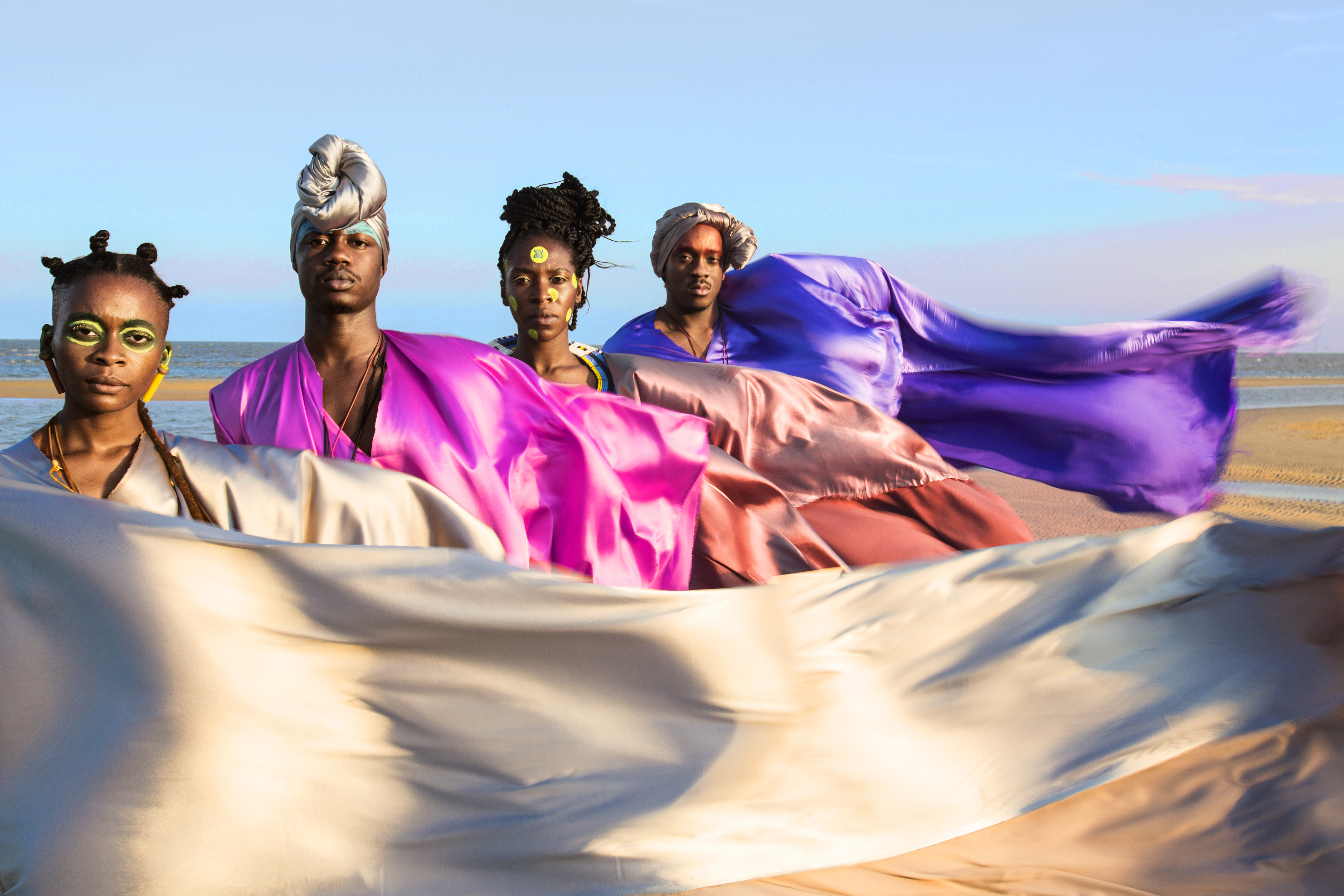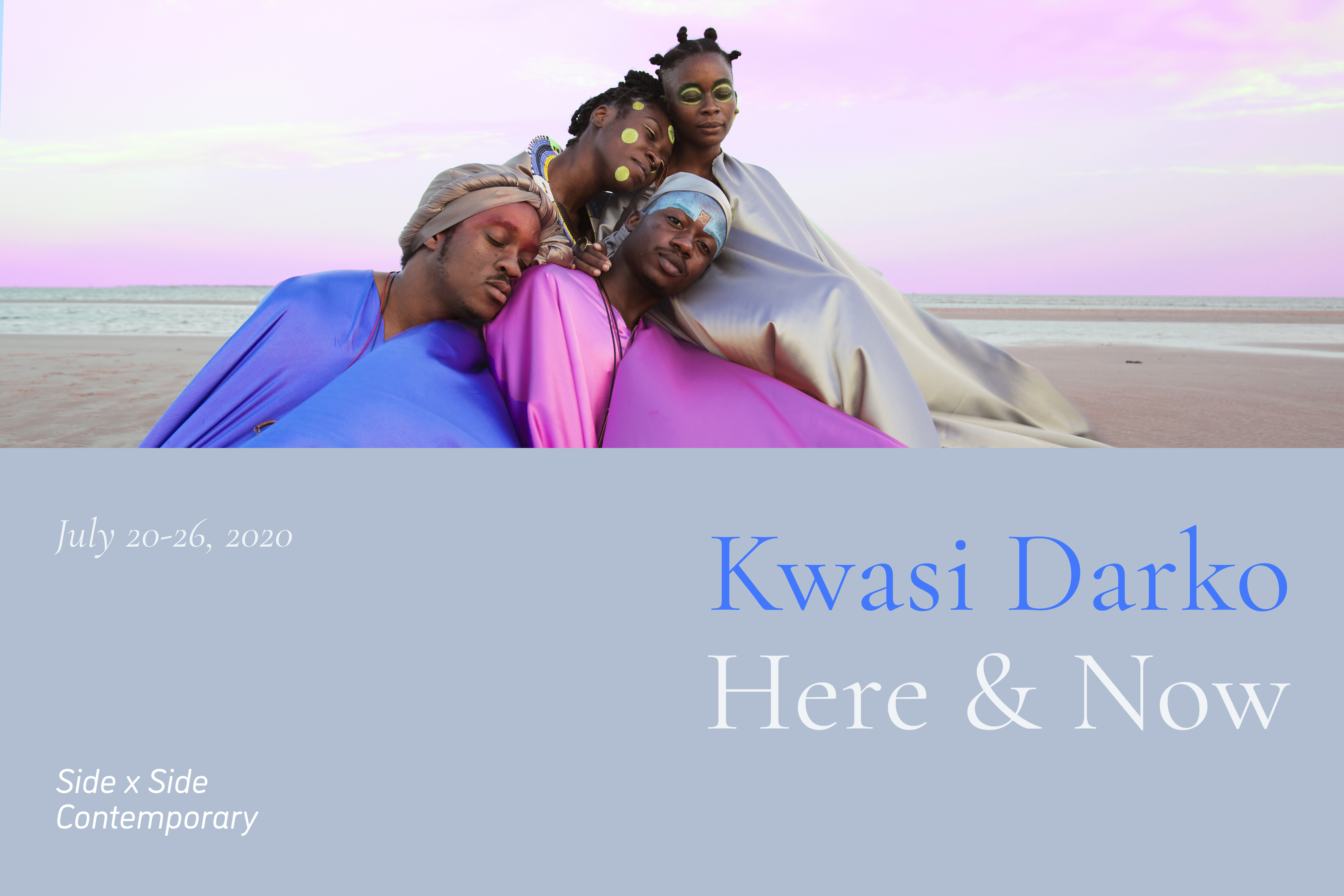Here & Now:
an Interview with Kwasi Darko
By Side x Side Contemporary - July 20, 2020
Kwasi Darko is a Ghanaian fine arts photographer and artist living and working on the African continent. His work shines light on people living in the shadows, oppressed and muted by a society meant to protect them. The poetic and dramatic nature of the work is influenced by his B.A in Theater and Arts.
He was a part of the British Council Residency 2019 for which the first part of the series “Here and Now” was created. He was also induced into the World Press African Photojournalism database same year for same work and has since then began social documentary photography work responding to the current health, social and economic crisis of 2020 and how people, especially minorities, have been dealing with the aftermath. His current physical exhibition is ongoing at the Afrika Museum in Berg-en-dal, Netherlands.
He was a part of the British Council Residency 2019 for which the first part of the series “Here and Now” was created. He was also induced into the World Press African Photojournalism database same year for same work and has since then began social documentary photography work responding to the current health, social and economic crisis of 2020 and how people, especially minorities, have been dealing with the aftermath. His current physical exhibition is ongoing at the Afrika Museum in Berg-en-dal, Netherlands.
Thank you for taking the time for this interview with us! Can you tell us a bit about yourself, your background, and journey as an artist?
I was born and raised in Accra, Ghana, so most of my experiences and work references are drawn here. I’ve always loved art, always been involved in creating something one way or the other since I was little. I started with drawing and sketching when I was in primary school. The first person to ever show interest in that side of me and encourage it was our headmistress (principal) at the the time called Mrs. Darko (I know, same last names). She would enter me in these art competitions and encourage me to draw stuff. I was obsessed with drawing the titanic at that stage. Then in high school I started doing a bit of creative writing, novels and think pieces which my class mates at the time would review and give me feedback on. Those were my main creative outlets till university when I discovered photography along with the then freshly launched Instagram.
Initially my photos were just a way of me showing Ghana in a more colorful and positive light than what was usually portrayed or perceived of Africa. I started getting lots of positive feedback because people liked the minimal and vibrant approach I took with my composition. That really encouraged me to pursue making images on a deeper level because I also discovered the really therapeutic aspect of the practice where you can say what you felt with an image. What a writer would use words to enunciate is what I used a photograph to do. It was my own language of activism. My studies in theater arts at the time also greatly influenced the way I made images as I got more into the photo making, being that I would integrate most of the elements of theatre like lights, blocking, costumes and stage direction into the process.

You mention that your work “shines light on people living in the shadows, oppressed and muted by a society that meant to protect them.” Can you elaborate on the ideas and issues that you are referencing in your work?
Freedom and acceptance. For me it’s as simple as that. Living and letting live. It can be easy for people to frown on or criticize what they don’t understand without the painful process of learning and educating themselves on it and this greatly affects the way other people can live their lives. Culture is very ingrained in most of our societies (African) and although one feature of it is that it is dynamic, it can also be tool for resisting the unknown and my work usually confronts that. My muses are mostly people who are living their lives in ways very unconventional to those of the society they find themselves in. I try to celebrate that and create visibility in my own corner.

Tell us more about the Here and Now project. How did it take shape, where did you shoot it, and what was the overall experience of working on this project?
Here and Now was conceived at a time when I was deeply interested in identity and the many layers that it came with, some dominant in the society I found myself in and others barely scratched or even talked about. The first part of the project, which I used earthy tones for, was actually my first body of work. My main aim for that project was to highlight melanin and celebrate the beauty and diversity that came with being a black person because for so long, we didn’t really see the beauty in most of our features. And listening to stories and experiences from other black colleagues and friends from the diaspora made me realize what a universal problem that was not exclusive to just the continent. Growing up, for a very dark person to be complimented on their beauty, we would literally reference it to whiteness in the term “tuntum broni” meaning “dark whiteness,” the whiteness here being synonymous with beauty. I wanted to explore why blackness and the features it came with couldn’t be celebrated devoid of a white standard. The work got selected by The Colab Now residency which involved learning and creating in Maputo, Mozambique. There, the second part of the work which branches into a different layer of identity begun to form. This part explored the restrictions we placed on bodies and who, how, and when they could connect with. The general feel was very fluid, from the muses to the environment it was created in and this translated to the finished work. It was a very affirming experience for me.

There is a reference of unity and connection within this series, along with a sense of rhythmic body movements. Can you tell us about the role of the body and performance within your work and the ideas behind it?
I believe the limits we place on our minds translates to the physical through the body. And so, in my current practice, the body and form is my main subject in the images I make, the face included especially now that everyone has to cover half of it with masks. How it evolves to our experiences and how that affects the way we maneuver through spaces. The difference between being in a depressed body and being in an elated one, regardless of it being the same body. The performance aspect of my work mostly comes from my theatre past and its definitely an integral part of my work. The stories our bodies tell by simple or complicated movements which when translated is called dance. I’m working with lots of dancers and body practitioners now.

You are currently working on a project of social documentary photography responding to the 2020 health, social, and economic crisis. What have you seen and learned along the way? Are there any communities that have impacted you?
I’ve seen how much we can pull our resources to help each other when it really calls for it and I’m impressed in that sense of community that has been shown globally. From institutions availing resources online for free to little videos and stories of everyday people doing remarkable and thoughtful things for each other online has been very uplifting and a way to focus on the positive in these trying times. I believe it has also being a time for discourse in a lot of areas because the time was finally there to do so; we paused on the rat race. Discussions on racism, sexism and sexuality have been very visible and audible online through social media which is always the first step of addressing these issues: discourse. The art community has definitely had one of the strongest impact on me at this time with the way artists have extended and shared resources. Even the most innocent kind and uplifting words, shared via DMs or through posts throughout the period have had the most profound impact on me personally in keeping sane and maintaining some sort of balance in this unbalanced period.
What have you been listening to, reading, or watching lately? Do you have any resources for artists that you would like to share?
Lots of music and reading. That’s how I’ve been getting by in isolation. My go to sound artist at the moment for uplifting and focusing is a Jamaican artist called Mortimer. With reading, I’m juggling between Graham Clarke’s The Photograph and a book that integrates media, art and science called Visual Communication. One talks about traditional photography, it’s history and journey while the other focuses on the future of photography, the digital aspect and the addition of augmented and virtual reality which is a direction I’m seriously looking into going, having already experimented with AR in the second part of Here & Now. I think that might also explain my current obsession with Altered Carbon. In terms of resources, I’m always sharing and reposting opportunities and resources in my stories.
*View Kwasi Darko’s exhibition here
*For more info on Kwasi Darko’s work please visit his website & Instagram

Interview by:
Side x Side Contemporary
Krista Brand & Mana Mehrabian
Image List:
Kwasi Darko, Fire, Digital Photograph, 2020
Kwasi Darko, Difference, Digital Photograph, 2020
Kwasi Darko, Earth, Digital Photograph, 2020
Kwasi Darko, Community II, Digital Photograph, 2020
Kwasi Darko, Fire, Digital Photograph, 2020
Kwasi Darko, Difference, Digital Photograph, 2020
Kwasi Darko, Earth, Digital Photograph, 2020
Kwasi Darko, Community II, Digital Photograph, 2020
Images © 2020 Kwasi Darko